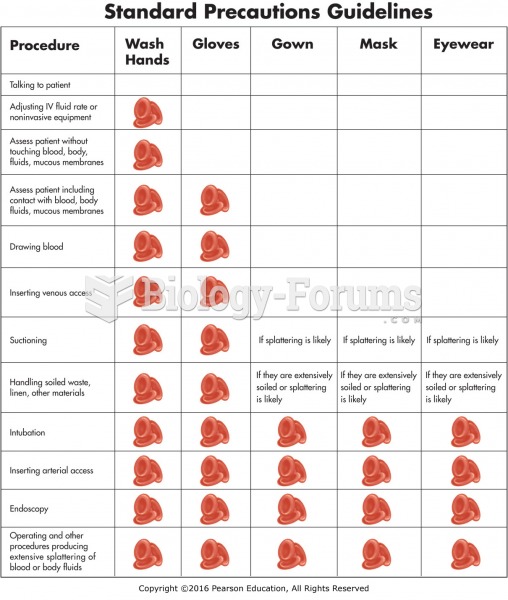|
|
|
Children with strabismus (crossed eyes) can be treated. They are not able to outgrow this condition on their own, but with help, it can be more easily corrected at a younger age. It is important for infants to have eye examinations as early as possible in their development and then another at age 2 years.
Signs and symptoms of a drug overdose include losing consciousness, fever or sweating, breathing problems, abnormal pulse, and changes in skin color.
When intravenous medications are involved in adverse drug events, their harmful effects may occur more rapidly, and be more severe than errors with oral medications. This is due to the direct administration into the bloodstream.
Sperm cells are so tiny that 400 to 500 million (400,000,000–500,000,000) of them fit onto 1 tsp.
Street names for barbiturates include reds, red devils, yellow jackets, blue heavens, Christmas trees, and rainbows. They are commonly referred to as downers.
 Standard precaution guidelines. Additional guidelines/protocols may be utilized depending on the ...
Standard precaution guidelines. Additional guidelines/protocols may be utilized depending on the ...
 Finish with effleurage and passive touch. Apply effleurage to both sides simultaneously, starting at ...
Finish with effleurage and passive touch. Apply effleurage to both sides simultaneously, starting at ...





